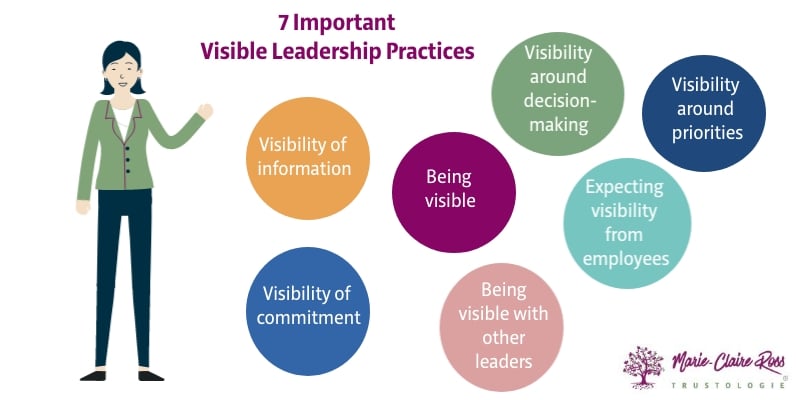
In today’s fast-changing workplace, managers face unprecedented complex challenges. From hybrid work complexities to team alignment struggles, it takes more than...
In last week's article, 4 Key Features that Confirm a Quality Leadership Development program we explored the essential features to consider when selecting a leadership program.
As a refresh, an effective leadership program must be designed to improve leadership skills. The leadership program's vision, learning outcomes, method and impact are all inter-related and work together to improve leadership capacity.
Seems obvious, but many business schools have leadership programs that are not truly designed with this in mind. They are evaluated by how much people enjoyed the program.
According to the Kirkpatrick Model of Training Evaluation, there are four levels of leadership course evaluation. Level 1 is the reaction to the training and is considered the most basic moving up to the most optimal outcome, Level 4 (results). Put simply, it's about how effectively the training achieves its intended outcomes, supported by a framework of accountability and assistance.
This is why most leadership training courses do not always improve leadership potential. They focus on the superficial level one assessments.
In this article, I want to go deeper into the methodology of leadership programs that develop effective leaders.

Effective leadership development programs have multi-layers of best practices interwoven that provide the optimal learning journey. Let's go through the top seven:
In the famous article, "The 7 Transformations of Leadership", it was remarked that development psychologists all agree that effective leaders know themselves and how they react when their power or safety is challenged.
Undertaking a voyage of personal understanding and development transforms not only leadership skills for the leader themselves, but also supports the professional development of those around them.
Other research studies have also found the importance of leaders developing their self-awareness. Effective leadership programs must not only work with leaders to improve their performance on daily tasks, but understanding their whole selves, as well.
When searching for a leadership training course, seek programs that assist leaders in gaining a deeper understanding of themselves and their leadership style. Specifically, ensure that reflective practices are central to the curriculum and that learning is effectively facilitated.
For example, in the Tribe of Trusted Leader's program, a full four months of the curriculum is spent with team leaders to understand themselves better. This includes undertaking an Enneagram assessment with a one hour debrief and one-on-one coaching. Homework is also given to help leaders better understand their leadership vision, values, their current strengths, as well as communication and work styles.
Enhancing self-awareness will also ensure team leaders ask themselves what new leadership skills or leadership qualities they need to improve both their personal leadership and team leadership.
As one student said, "What I found really helpful in the Tribe of Trusted Leaders program was the section, leading yourself. I learned a lot about myself. A lot of the self-reflection exercises were very useful, because before this, I didn't believe I had it in me to lead a team."
Typically, if team leaders start a leadership training course they won't improve unless they have defined their career goals to improve essential skills.
As David Day, professor of psychological safety at Claremont College says "Leadership is complicated and abstract with different parts. You have to break it down and see what you need to work on and set some subgoals to do things better and practice it. All the time."
An effective leadership program takes into account a leader's career goals, in relation to organisational goals. Without goals, there is no real incentive to learn and change. This also requires talking to their senior manager about the leadership skills or practical skills they need to be effective in their management role.
Integral to this is team leaders having a better understanding of their current leadership style, so that they can make goals around their preferred leadership style. Team leaders need to work out what they want to achieve as a leader and what steps they need to take there.
When evaluating leadership training courses, look at how they encourage leadership development goals and work with participants during the program to help them reach those goals with not only the learner themselves, but also with their senior manager.
In the Tribe of Trusted Leader's program, participants fill out an online leadership capability assessment to evaluate their current leadership capabilities. Their direct senior manager also fills out the same assessment, so results can be contrasted. This helps students understand where they are at. They then put together SMART goals, which are then used to measure their learning progress over the 12 month program.
As adults we don't learn unless we are being challenged. Nobody develops if they are comfortable.
Sitting in a classroom and being told theory is not enough. Leaders need to take action, experiment with newly learnt practical skills and engage in a reflective practice.
The truth is changing our approach to leadership is hard. It's too easy to fall back into feeling comfortable or simply giving up.
Being challenged can be done in a number of ways - from learners being expected to discuss their perspective in workshops, undertaking assignments based on workplace challenges, case studies, self-reflection activities, participating in complex projects, trying out new practical skills they have learned or receiving individual or group coaching.
When evaluating a leadership program, look at testimonials to see if participants have changed their mind about leadership. Check to see whether any coaching is undertaken or if there are reflective practices or interactive activities.
There needs to be some form of active participation where leaders practise what they're learning in training and apply it the real world.
When it comes to examples of leadership training that challenge learners, in the Tribe of Trusted Leader's program, each participant has to prepare a presentation at the end of the program to discuss what they learnt, what they applied, what worked, what didn't work and what they changed their mind about. Not only are their fellow students present, but their boss as well. Feedback is provided not only by the facilitator but their senior executive. A retrospective approach forces team leaders to be accountable to demonstrating that they have tried new things.
As I mentioned in the previous article on effective leadership development programs, studies have found that leadership development courses fail when there is no senior leader support to apply new leadership skills.
When senior leaders champion leadership development, it motivates people to learn and change. Creating the ideal conditions for them to apply what they’ve studied; foster immediate improvements in both individual and organisational outcomes; and put in place the right systems that help sustain learning outcomes.
Effective leadership training ensures learning occurs in the flow of work.
When participants in the Tribe of Trusted Leaders program concentrated on a specific leadership skill, like conducting one-on-one meetings more effectively or obtaining feedback from their direct reports, the practical experience and group reflection enhanced their effective communication skills.
When assessing a leadership program, check if there is the opportunity to involve direct managers.
In the Tribe of Trusted Leader's program, senior managers are required to fill out a leadership capabilities assessment pre, midway and post the development course. They are also invited into a meeting with the course facilitator to discuss skills required, current strengths, organisational goals and progress of their direct report at the same cadence.
This way not only can timely interventions be made with students, but progress can be seen in alignment with the leadership development opportunity.
For example, the CEO of a midsize company was involved in these meetings for two of his direct reports. Through assessing where each student was at and working with the facilitator, the CEO was able to apply the right coaching skills to help each team leader move forward with their leadership development.
Another important component of adult learning is learning from the experiences of others. In fact, you want students to be able to build relationships and connect with others.
Frequently, I come across many leaders who are sitting in their "leadership bubble." They believe that they are the only ones going through their business challenges. It means they tend to have a fixed mindset about solving issues.
It's important that any leadership development course includes a variety of people from different industries and job roles.
When participants bring their skills, beliefs and experiences, it also has the power to ignite "colliding perspectives." This is when people experience a different world view.
Most people have closed networks and get their viewpoints reinforced often. All this does is just perpetuate the same thinking and behaviours. This is even more pronounced when we consider social media algorithms and how we get served up content that merely confirms our beliefs.
When evaluating leadership training courses, assess whether there is the opportunity for coaching or an interactive learning development workshop. For example, group coaching or interactive activities where students get to discuss and share their perspectives and experiences.
The right leadership topics are also important to consider. As I mentioned in the previous article, various research studies have found four areas of effective leadership:
In addition, organisations need to assess whether the leadership competencies being addressed are what is required to meet the future vision and current needs.
Of course, the quality of the facilitator is also important. Choose facilitators who have real-world experience and who have developed and researched the curriculum. Avoid programs where facilitators read directly from a script.
A question I'm often asked is: which is better virtual learning or face-to-face learning?
Interestingly, the research shows there is no discernible differences in the positive impact achieved in terms of personal growth and wellbeing.
Unfortunately, there is no research into more granular differences between in-person and online programs in terms of delivery or curriculum.
However, in my anecdotal experience online leadership courses work better when it comes to reflective practices. Trainees often don't feel comfortable enough in-person to think deeply about themselves.
In addition, interactive activities such as breakout sessions and chat, can often build more safety in the online learning environment, which ensures even introverts feel more comfortable sharing their opinions.
In essence, online learning can still provide a powerful learning experience and successful outcomes. What is really important is that training is immersive and enables participants to learn, apply and reflect. This can be over 12 months or over 6 weeks.
Financial professionals and insolvency specialists understand that approximately two-thirds of business risk originates internally. This means that the way leaders make decisions, motivate their teams, achieve or fail to meet business objectives, and implement significant changes poses the greatest risk to organisations.
Poor leadership brings significant costs to organisational performance, performance culture, and future growth. It leads to disengaged employees, high turnover rates, and diminished productivity, which directly impacts the bottom line.
Leadership training isn't a luxury, it's a must have. Successful leaders know how to make a positive impact through working with people well. Make sure your leaders, lead your company optimally. The best way to do this is to invest in high quality leadership development.

In today’s fast-changing workplace, managers face unprecedented complex challenges. From hybrid work complexities to team alignment struggles, it takes more than...
